Arab League
| League of Arab States
جامعة الدول العربية
Jāmiʻat ad-Duwal al-ʻArabiyya |
||||||
|---|---|---|---|---|---|---|
|
||||||
.svg.png) |
||||||
| Headquarters | Cairo, Egypt1 | |||||
| Official languages | Arabic | |||||
| Membership |
22 members
|
|||||
| Leaders | ||||||
| - | Secretary General | Amr Moussa (since 2001) | ||||
| - | Council of the Arab League |
Syria | ||||
| - | Speaker of the Arab Parliament |
Nabih Berri | ||||
| Establishment | ||||||
| - | Alexandria Protocol | March 22, 1945 | ||||
| Area | ||||||
| - | Total area | 13,953,041 km2 (2nd2) 5,382,910 sq mi |
||||
| Population | ||||||
| - | 2009 estimate | 360,029,936 (3rd2) | ||||
| - | Density | 24.33/km2 63/sq mi |
||||
| GDP (PPP) | 2009 estimate | |||||
| - | Total | $2.612 trillion[1] (6th2) | ||||
| - | Per capita | $7,672 (92nd) | ||||
| GDP (nominal) | 2009 estimate | |||||
| - | Total | 1.526 trillion (10th) | ||||
| - | Per capita | $13.772 (48th) | ||||
| Currency |
21 currencies
----
ISO 4217 codes bracketed: |
|||||
| Time zone | (UTC+0 to +4) | |||||
| Website (Arabic) http://arableagueonline.org |
||||||
| 1 | From 1979 to 1989: Tunis, Tunisia | |||||
| 2 | If ranked among nation states. | |||||
The Arab League (Arabic: الجامعة العربية al-Jāmiʻa al-ʻArabiyya), officially called the League of Arab States (Arabic: جامعة الدول العربية Jāmiʻat ad-Duwal al-ʻArabiyya), is a regional organisation of Arab states in North and Northeast Africa, and Southwest Asia. It was formed in Cairo on March 22, 1945 with six members: Egypt, Iraq, Transjordan (renamed Jordan after 1946), Lebanon, Saudi Arabia, and Syria. Yemen joined as a member on May 5, 1945. The Arab League currently has 22 members and four observers. The main goal of the league is to "draw closer the relations between member States and co-ordinate collaboration between them, to safeguard their independence and sovereignty, and to consider in a general way the affairs and interests of the Arab countries."[2]
Through institutions such as the Arab League Educational, Cultural and Scientific Organization (ALESCO) and the Economic and Social Council of the Arab League's Council of Arab Economic Unity (CAEU), the Arab League facilitates political, economic, cultural, scientific and social programs designed to promote the interests of the Arab world.[3][4] It has served as a forum for the member states to coordinate their policy positions, to deliberate on matters of common concern, to settle some Arab disputes, and to limit conflicts such as the 1958 Lebanon crisis. The League has served as a platform for the drafting and conclusion of many landmark documents promoting economic integration. One example is the Joint Arab Economic Action Charter which sets out the principles for economic activities in the region.
Each member state has one vote in the League Council, while decisions are binding only for those states that have voted for them. The aims of the league in 1945 were to strengthen and coordinate the political, cultural, economic, and social programs of its members, and to mediate disputes among them or between them and third parties. Furthermore, the signing of an agreement on Joint Defense and Economic Cooperation on April 13, 1950 committed the signatories to coordination of military defense measures.
The Arab League has played an important role in shaping school curricula, advancing the role of women in the Arab societies, promoting child welfare, encouraging youth and sports programs, preserving Arab cultural heritage, and fostering cultural exchanges between the member states. Literacy campaigns have been launched, intellectual works reproduced, and modern technical terminology is translated for the use within member states. The league encourages measures against crime and drug abuse, and deals with labour issues—particularly among the emigrant Arab workforce.
Contents |
Member states

40s 50s 60s 70s
The Arab League was founded in Cairo in 1945 by Egypt, Iraq, Lebanon, Saudi Arabia, Syria, Transjordan (Jordan from 1946), and Yemen. There was a continual increase in membership during the second half of the 20th century, with additional 15 Arab states and 4 observers being admitted.
Egypt's membership was suspended in 1979 after it signed the Egyptian–Israeli Peace Treaty, and the League's headquarters were moved from Cairo to Tunis. In 1987, Arab League states restored diplomatic relations with Egypt, and the country was readmitted to the League in 1989, and the League's headquarters were moved back to Cairo.[5] In September 2006, Venezuela was accepted as an observer, and India in 2007.
Israel is not a member despite 20% of its population being Palestinian Arab, nearly half the Jewish population being descended from Jews from Arab countries, and Arabic being an official language.
Chad is also not a member, despite Arabic being one of its two official languages, some 12% of Chadians identifying as Arab[6] and around 900'000 Arabic-speaking[7].
The Sahrawi Arab Democratic Republic is not a member of the Arab League as it is recognized by only some Arab League states, while Western Sahara is recognized by the League as part of Morocco, which controls nearly 80% of the territory.
Four countries are observer states—a status that entitles them to express their opinion and give advice but denies them voting rights.[8] These are Eritrea, where Arabic is one of the official languages, as well as Brazil and Venezuela, which have large and influential Arab communities. India is another observer to the Arab League.
The current members of the Arab League are listed below:
| Country |
Admission date |
Capital |
Area (km²) |
Population (2008) |
Density (per km²) |
GDP (2008) in millions |
GDP (2009) per capita |
Currency |
Official languages |
|---|---|---|---|---|---|---|---|---|---|
| 1962, August 16 | Algiers | 2,381,741 | 34,895,000 | 14.6 | $159,669 | $4,588 | Dinar | Arabic | |
| 1971, September 11 | Manama | 750 | 791,000 | 1,189 | $27,014 | $34,662 | Dinar | Arabic | |
| 1993, November 20 | Moroni | 2,235 | 798,000 | 275 | $754 | $1,157 | Franc | Comorian, Arabic, French | |
| 1977, September 4 | Djibouti | 23,200 | 864,000 | 37.2 | $1,880 | $2,396 | Franc | Arabic, French | |
| 1945, March 22 | Cairo | 1,002,450 | 77,420,000 | 82.3 | $443,430 | $5,896 | Pound | Arabic | |
| 1945, March 22 | Baghdad | 438,317 | 31,234,000 | 71.2 | $114,151 | $3,655 | Dinar | Arabic, Kurdish | |
| 1945, March 22 | Amman | 92,300 | 6,316,000 | 68.4 | $32,416 | $5,661 | Dinar | Arabic | |
| 1961 July 20 | Kuwait city | 18,000 | 3,000,000 | 167.5 | $137,450 | $38,875 | Dinar | Arabic | |
| 1945, March 22 | Beirut | 10,452 | 4,224,000 | 404 | $53,818 | $13,952 | Lira | Arabic | |
| 1956, March 28 | Tripoli | 1,759,541 | 6,420,000 | 3.6 | $60,609 | $9,570 | Dinar | Arabic | |
| 1973 November 26 | Nouakchott | 1,030,700 | 3,291,000 | 3.2 | $6,232 | $2,055 | Ouguiya | Arabic | |
| 1958, October 1 | Rabat | 446,550 | 31,993,000 | 71.6 | $146,231 | $4,587 | Dirham | Arabic | |
| 1971, September 29 | Muscat | 309,550 | 2,845,000 | 9.2 | $68,331 | $24,674 | Rial | Arabic | |
| 1976, September 9 | Ramallah | 6,040 | 4,136,540 | – | $11,950 | $2,900 | Dinar, Shekel | Arabic | |
| 1971, September 11 | Doha | 11,437 | 1,409,000 | 123.2 | $94,404 | $86,008 | Riyal | Arabic | |
| 1945, March 22 | Riyadh | 2,149,690 | 28,686,633 | 12 | $592,886 | $23,814 | Riyal | Arabic | |
| 1974, February 14 | Mogadishu | 637,661 | 9,133,000 | 14.3 | $7,599 | $795 | Shilling | Somali, Arabic | |
| 1956, January 19 | Khartoum | 2,505,813 | 42,272,000 | 16.9 | $92,037 | $2,309 | Pound | Arabic, English | |
| 1945, March 22 | Damascus | 185,180 | 21,906,000 | 118.3 | $55,024 | $2,767 | Lira | Arabic | |
| 1958, October 1 | Tunis | 163,610 | 10,432,500 | 63 | $82,636 | $8,002 | Dinar | Arabic | |
| 1971, December 6 | Abu Dhabi | 83,600 | 6,000,000 | 55 | $187,851 | $38,283 | Dirham | Arabic | |
| 1945, May 5 | Sana'a | 527,968 | 23,580,000 | 44.7 | $55,393 | $2,410 | Rial | Arabic |
Geography
The area of members of the Arab League covers around 14,000,000 km2 (5,400,000 sq mi) and straddles two continents: Africa, and Asia. The area consists of large arid deserts, namely the Sahara. Nevertheless, it also contains several very fertile lands, such as the Nile Valley, the High Atlas Mountains, and the Fertile Crescent which stretches from Iraq over Syria, and Lebanon, Palestine, and Israel. The area comprises also deep forests in southern Arabia, and southern Sudan as well as the major parts of the world's longest river, the Nile.
The area witnessed the rise of many ancient civilizations: Ancient Egypt, Ancient Israel, Assyria, Babylon, Phoenicia, Carthage, Kush, and Nabateans, .
| Arab League |
 This article is part of the series: |
|
Governance
|
|
Arab issues
|
|
Foreign relations
|
|
Arab unity
|
|
Economy
|
|
Culture
|
|
Demographics
|
|
Geography
|
|
Transportation
|
|
Military
|
Governance
The Charter of the Arab League[2] endorsed the principle of an Arab homeland while respecting the sovereignty of the individual member states. The internal regulations of the Council of the League[9] and the committees[10] were agreed in October 1951. Those of the Secretariat-General were agreed in May 1953.[11]
Since then, governance of the Arab League has been based on the duality of supra-national institutions and the sovereignty of the member states. Preservation of individual statehood derived its strengths from the natural preference of ruling elites to maintain their power and independence in decision making. Moreover, the fear of the richer that the poorer may share their wealth in the name of Arab nationalism, the feuds among Arab rulers, and the influence of external powers that might oppose Arab unity can be seen as obstacles towards a deeper integration of the league.
Economy
The Arab League is rich in resources, with enormous oil, and natural gas resources in certain member states; it also has great fertile lands in southern Sudan, usually referred to as the food basket of the Arab World. The region's instability has not affected its tourism industry that is considered the fastest growing industry in the region, with Egypt, the UAE, Morocco, Tunisia, and Jordan leading the way. Another industry that is growing steadily in the Arab League is telecommunications. Within less than a decade, local companies such as Orascom, and Etisalat have managed to compete internationally.
Economic achievements initiated by the League amongst member states have been less impressive than those achieved by other smaller Arab organisations such as the Gulf Cooperation Council (GCC). However, several promising major economic projects are set to be completed soon.[12] Among them is the Arab Gas Pipeline, scheduled to be accomplished in 2010. It will transport Egyptian and Iraqi gas to Jordan, Syria, Lebanon, and Turkey. The Greater Arab Free Trade Area (GAFTA), planned to come into effect on January 1, 2008, will render 95% of all Arab products free of customs.
Economic development in the Arab League is very disparate. Significant difference in wealth and economic conditions exist between the rich oil states of the UAE, Qatar, Kuwait, and Algeria on the one hand, and poor countries like the Comoros, Mauritania, and Djibouti on the other. Arab economic funding is under development. As an example, the Arab League agreed to support the Sudanese region of Darfur with US$500 million, and Egyptian, and Libyan companies are planning to build several wells in this dry area.
List of member states by GDP (PPP)
Education
In collecting literacy data, many countries estimate the number of literate people based on self-reported data. Some use educational attainment data as a proxy, but measures of school attendance or grade completion may differ. Because definitions and data collection methods vary across countries, literacy estimates should be used with caution.| United Nations Development Programme Report 2009.[1][2]
| Rank | Country | Literacy rate [b] |
|---|---|---|
| 1 | 94.5 | |
| 2 | 93.8 | |
| 3 | 93.1 | |
| 4 | 91.1 | |
| 5 | 90.0 [l] | |
| 6 | 89.7 [j] | |
| 7 | 89.6 [j] | |
| 8 | 88.8 | |
| 9 | 84.2 [l] | |
| 10 | 82.9 | |
| 11 | 81.4 | |
| 12 | 80.8 | |
| 13 | 74.3 | |
| 14 | 71.4 | |
| 15 | 70.5 | |
| 16 | 70.3 [j] | |
| 17 | 69.9 | |
| 18 | 60.9 [aa] | |
| 19 | 54.1 [l] | |
| 20 | 51.2 | |
| x | 72.3 | |
| x | No info Submitted |
Status of Palestine
Mindful of their previous announcements in support of the Arabs of Palestine the framers of the Pact were determined to include them within the League from its inauguration.[13] This was done by means of an annex that declared:[2]
| “ | Even though Palestine was not able to control her own destiny, it was on the basis of the recognition of her independence that the Covenant of the League of Nations determined a system of government for her. Her existence and her independence among the nations can, therefore, no more be questioned de jure than the independence of any of the other Arab States. [...] Therefore, the States signatory to the Pact of the Arab League consider that in view of Palestine's special circumstances, the Council of the League should designate an Arab delegate from Palestine to participate in its work until this country enjoys actual independence | ” |
At the Cairo Summit of 1964, the Arab League initiated the creation of an organisation representing the Palestinian people. The first Palestinian National Council convened in East Jerusalem on May 29, 1964. The Palestinian Liberation Organization was founded during this meeting on June 2, 1964.
Today, Palestine enjoys the status of a full member of the Arab League as the State of Palestine (not as the Palestinian Authority, as is the case in certain other international fora).
At the Beirut Summit on March 28, 2002 the league adopted the Arab Peace Initiative,[14] a Saudi-inspired peace plan for the Arab–Israeli conflict. The initiative offered full normalisation of the relations with Israel. In exchange, Israel was requireded to withdraw from all occupied territories, including the Golan Heights, to recognise Palestinian independence in the West Bank and Gaza Strip, with East Jerusalem as its capital, as well as a "just solution" for the Palestinian refugees.
The Peace Initiative was again endorsed at 2007 in the Riyadh Summit. In July 2007, the Arab League sent a mission, consisting of the Jordanian and Egyptian foreign ministers, to Israel to promote the initiative. The mission was welcomed with reservations by Israel.
Following Venezuela's move to expel the resident Israeli diplomats amid the 2008–2009 Israel–Gaza conflict, Kuwaiti member of parliament Waleed al-Tabtabai made a public plea to move the Arab League headquarters from Cairo to Caracas, Venezuela.[15]
On June 13, 2010, Amr Mohammed Moussa, Secretary-General of the Arab League visited the Gaza Strip in a move to pressure Israel to lift its economic blockade against the Gaza due to its leadership under Hamas. The visit by Moussa was the first by an official of the Arab League since the election of Hamas in 2007. Immediately after the Israeli raid on the flotilla of ships bringing aid to Gaza, Moussa said the Arab League would go to the UN Security Council to demand the blockade be lifted. Israel maintains that the blockade is needed for Israeli security.
Demographics
The Arab League is a culturally and ethnically diverse association of 22 member states, although the overwhelming majority of the League's population identifies as Arab (either on a cultural basis, or on an ethno-racial basis). As of January 1, 2007, about 340,000,000 people live in the states of the Arab League. Its population grows faster than in most other global regions. This threatens to diminish the slow economic expansion expected in the league's developing countries.
The most populous member state is Egypt, with a population of about 77.5 million. The least populated is Djibouti, with about 0.5 million inhabitants.
Since large parts of the Arab League are desert, the population is concentrated in and around cities where most the trade and industry are located. The largest Arab city is Cairo, followed by Baghdad, Khartoum, Giza, Damascus, Riyadh, and Casablanca.
| Pos | Country | Population |
|---|---|---|
| 1 | 77,500,000 | |
| 2 | 40,123,748 | |
| 3 | 34,895,000 | |
| 4 | 31,649,000 | |
| 5 | 30,747,000 | |
| 6 | 25,721,000 | |
| 7 | 23,580,000 | |
| 8 | 21,906,000 | |
| 9 | 10,327,800 | |
| 10 | 9,133,000 | |
| 11 | 6,420,000 | |
| 12 | 6,316,000 | |
| 13 | 4,599,000 | |
| 14 | 4,224,000 | |
| 15 | 4,136,540 | |
| 16 | 3,291,000 | |
| 17 | 2,985,000 | |
| 18 | 2,845,000 | |
| 19 | 1,409,000 | |
| 20 | 864,000 | |
| 21 | 791,000 | |
| 22 | 676,000 | |
| Total | 360,029,936 |
Religion
The vast majority of the Arab League's citizens are Muslim, with Christianity being the second largest religion. Prior to the establishment of the State of Israel, significant number of Jews also lived in Arab counties. The members of the Arab League host several holy cities and other religiously significant locations, including Bethlehem, Alexandria, Mecca, Medina, Najaf, Kirkuk, Arbil, and Baghdad. Sunni Muslims make up the majority of the Arab League's citizens. However, large numbers of Shi'a Muslims make up the majority in areas of Lebanon, Iraq, Bahrain, and Kuwait.
Christianity is the second largest religion in the League, with over 20 million Christians living in countries such as Iraq, Lebanon, Egypt, Sudan, Syria, and Jordan. There are smaller Jewish populations living mainly in the western part of the Arab League. States such as Morocco, Algeria, and Tunisia all have Jewish populations. However, most Jews living in the Arab World immigrated to Israel after its establishment in 1948. Other minor religions such as the Bahá'í Faith are practiced on a much smaller scale.
- Muslim population - 311,093,951
- Total population - 339,510,535
Religious percentages of the Arab League
| N | Country | Muslims | Christians | Others |
|---|---|---|---|---|
| _ | 91% | 5% | 4% | |
| 1 | 97% | 2% | 1% | |
| 2 | 81.2% | 9% | 8.81% | |
| 3 | 99% | 1% | n/a | |
| 4 | 94% | 5% | 1% | |
| 5 | 80% | 20% | n/a | |
| 6 | 95% | 4.3% | 0.7% | |
| 7 | 93% | 6% | 1% | |
| 8 | 95% | 10% | 10% | |
| 9 | 54.7%(Druze represents 5%) | 45% | 0.3% | |
| 10 | 97% | 0% | 3% | |
| 11 | 100% | 0% | 0% | |
| 12 | 95% | 3% | 2% | |
| 13 | 92.5% | 5% | 2.5% | |
| 14 | 92% | 8% | - | |
| 15 | 67.5% | 20% | 12.5% | |
| 16 | 89% | 4.5% | 6.5% | |
| 17 | 100% | 0% | 0% | |
| 18 | 70% | 25% | 5% | |
| 19 | 85%(Druze represents 3%) | 15% | 0% | |
| 20 | 95% | 3% | 2% | |
| 21 | 62% | 8.5% | 29.5% | |
| 22 | 95% | 0.2% | 4.8% |
Comparisons with other organizations
The Arab League resembles the Organization of American States, the Council of Europe, and the African Union, in that it has primarily political aims. However, membership in the League is based on culture rather than purely geographical location. In this respect, the Arab League resembles organisations such as the Latin Union, or the Caribbean Community.
The Arab League differs notably from the European Union in that it has not achieved a significant degree of regional integration, and the organisation itself has no direct relations with the citizens of its member states. However, the Arab League is based on principles that support and promote a unified Arab nationalism, and a common position among Arab states on various issues.
All Arab League members are also members of the Organisation of the Islamic Conference. In turn, the memberships of the smaller GCC, and Arab Maghreb Union organisations are subsets of that of the League.
Secretaries-General
| 1945 to 1952 | |
| 1952 to 1972 | |
| 1972 to 1979 | |
| 1979 to 1990 | |
| 1991 to 2001 | |
| 2001 to date |
Summits
 Cairo: 13–17 Jan. 1964.
Cairo: 13–17 Jan. 1964. Alexandria: 5–11 Sep. 1964.
Alexandria: 5–11 Sep. 1964.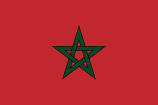 Casablanca: 13–17 Sep. 1965.
Casablanca: 13–17 Sep. 1965.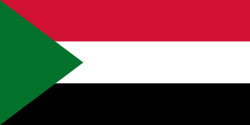 Khartoum: 29 Aug. 1967.
Khartoum: 29 Aug. 1967. Rabat: 21–23 Dec. 1969.
Rabat: 21–23 Dec. 1969. Cairo (first emergency summit): 21–27 Sep. 1970
Cairo (first emergency summit): 21–27 Sep. 1970 Algiers: 26–28 Nov.1973.
Algiers: 26–28 Nov.1973. Rabat: 29 Oct. 1974.
Rabat: 29 Oct. 1974. Riyadh (2nd emergency summit): 17–28 Oct. 1976.
Riyadh (2nd emergency summit): 17–28 Oct. 1976. Cairo: 25–26 Oct. 1976.
Cairo: 25–26 Oct. 1976.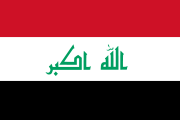 Baghdad: 2–5 Nov.1978.
Baghdad: 2–5 Nov.1978.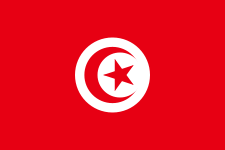 Tunis: 20–22 Nov. 1979.
Tunis: 20–22 Nov. 1979. Amman: 21–22 Nov. 1980.
Amman: 21–22 Nov. 1980. Fes: 6–9 Sep. 1982.
Fes: 6–9 Sep. 1982. Casablanca (3rd emergency summit): 7–9 Sep. 1985
Casablanca (3rd emergency summit): 7–9 Sep. 1985 Amman (4th emergency summit): 8–12 Nov. 1987.
Amman (4th emergency summit): 8–12 Nov. 1987. Algiers (5th emergency summit): 7–9 Jun. 1988.
Algiers (5th emergency summit): 7–9 Jun. 1988. Casablanca (6th emergency summit): 23–26 Jun. 1989.
Casablanca (6th emergency summit): 23–26 Jun. 1989. Baghdad (7th emergency summit): 28–30 Mar. 1990.
Baghdad (7th emergency summit): 28–30 Mar. 1990. Cairo (8th emergency summit): 9–10 Aug. 1990
Cairo (8th emergency summit): 9–10 Aug. 1990 Cairo (9th emergency summit): 22–23 Jun. 1996.
Cairo (9th emergency summit): 22–23 Jun. 1996. Cairo (10th emergency summit): 21–22 Oct. 2000.
Cairo (10th emergency summit): 21–22 Oct. 2000. Amman: 27–28 Mar. 2001.
Amman: 27–28 Mar. 2001.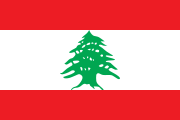 Beirut: 27–28 Mar. 2002.
Beirut: 27–28 Mar. 2002. Sharm el-Sheikh: 1 Mar. 2003.
Sharm el-Sheikh: 1 Mar. 2003. Tunis: 22–23 May. 2004.
Tunis: 22–23 May. 2004. Algiers: 22–23 Mar. 2005.
Algiers: 22–23 Mar. 2005. Khartoum: 28–30 Mar. 2006.
Khartoum: 28–30 Mar. 2006. Riyadh: 27–28 Mar. 2007.
Riyadh: 27–28 Mar. 2007.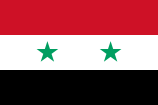 Damascus: 29–30 Mar. 2008.
Damascus: 29–30 Mar. 2008. Doha: 28–30 Mar. 2009.
Doha: 28–30 Mar. 2009. Sirt: 30–1 Mar-Apr. 2010.
Sirt: 30–1 Mar-Apr. 2010. Baghdad: Mar-Apr. 2011.
Baghdad: Mar-Apr. 2011.
- Two summits are not added to the system of Arab League summits:
- Anshas, Egypt: 28–29 May 1946
- Beirut, Lebanon: 13 – 15 November 1956
- Summit 14 in Fes, Morocco, occurred in two stages:
- On 25 November 1981: The 5-hours meeting ended without an agreed on document.
- On 6–9 September 1982
See also
- Arab Academy for Science and Technology and Maritime Transport (AASTMT)
- Arab Air Carriers Organization
- Arab Charter on Human Rights
- Arab Fund for Economic and Social Development (AFESD)
- Arabic industrial development and mining organization
- Arab Inter-parliamentary Union
- Arab League and the Arab–Israeli conflict
- Arab League boycott of Israel
- Arab Maghreb Union (UMA)
- Arab Monetary Fund
- Arab Organization for Industrialization
- Arab Parliament
- Arab World
- Council of Arab Economic Unity (CAEU)
- Federation of Arab Trade Unions and Labor Societies
- General Arab Insurance Federation
- General Union of Chambers of Commerce, Industry and Agriculture for Arab Countries
- Gulf Cooperation Council (GCC)
- International Confederation of Arab Trade Unions
- List of largest cities of the Arab League
- Organization of Arab Petroleum Exporting Countries (OAPEC)
- Organization of the Petroleum Exporting Countries (OPEC)
- Pan Arab Games
- Summit of South American-Arab Countries
- United Arab Command
- Orange card system - motor insurance scheme of the Arab League
References
- ↑ MENAFN (December 28, 2009). "Qatar, UAE, wealthiest Arab states". http://www.menafn.com/qn_news_story_s.asp?storyid=1093292067. Retrieved July 26, 2010.
- ↑ 2.0 2.1 2.2 "Pact of the League of Arab States, March 22, 1945". The Avalon Project. Yale Law School. 1998. http://www.yale.edu/lawweb/avalon/mideast/arableag.htm. Retrieved 2008-07-09.
- ↑ "The Arab League Educational, Cultural and Scientific Organization (ALESCO)". http://portal.unesco.org/culture/en/ev.php-URL_ID=36214&URL_DO=DO_PRINTPAGE&URL_SECTION=201.html.
- ↑ Ashish K. Vaidya, Globalization, (ABC-CLIO: 2006), p.525
- ↑ "Timeline: Arab League". BBC News. September 17, 2008. http://news.bbc.co.uk/2/hi/middle_east/country_profiles/1550977.stm. Retrieved November 30, 2009.
- ↑ https://www.cia.gov/library/publications/the-world-factbook/geos/cd.html
- ↑ http://www.ethnologue.com/show_country.asp?name=TD
- ↑ "India invited as observer for Arab League summit". Press Trust of India. 2007-03-27. http://www.expressindia.com/fullstory.php?newsid=83760. Retrieved 2007-06-13.
- ↑ "Internal Regulations of the Council of the League of Arab States". Model League of Arab States. Ed Haynes, Winthrop University. 1998-04-06. http://faculty.winthrop.edu/haynese/mlas/CouncilRegs.html. Retrieved 2008-07-09.
- ↑ "Internal Regulations of the Committees of the League of Arab States". Model League of Arab States. Ed Haynes, Winthrop University. 1998-04-06. http://faculty.winthrop.edu/haynese/mlas/CmteeRegs.html. Retrieved 2008-07-09.
- ↑ "Internal Regulations of the Secretariat-General of the League". Model League of Arab States. Ed Haynes, Winthrop University. 1998-04-06. http://faculty.winthrop.edu/haynese/mlas/SecGenRegs.html. Retrieved 2008-07-09.
- ↑ Reuters.com
- ↑ Geddes, 1991, p. 208.
- ↑ "The Arab Peace Initiative, 2002". al-bab.com. 2005-10-01. http://www.al-bab.com/arab/docs/league/peace02.htm. Retrieved 2008-07-09.
- ↑ "Kuwaiti MP calls to move Arab league to Venezuela". AFP, via CaribbeanNetNews. 2009-01-15. http://www.caribbeannetnews.com/news-13536--12-12--.html. Retrieved 2009-01-16.
Further reading
- Ankerl, Guy: Coexisting Contemporary Civilizations: Arabo-Muslim, Bharati, Chinese, and Western. Geneva, INU Press, 2000. ISBN 2-88155-0044-5
- Geddes, Charles L: A Documentary History of the Arab-Israeli Conflict. Greenwood Press, 1991. ISBN 0-275-93858-1
External links
- Arab League – official site in Arabic, English version under construction
- Arab Gateway – The League of Arab states
- World Statesmen – Arab League
- Winthrop University – Arab League General Information
- Jewish Virtual Library – The Arab League
- Looklex Encyclopedia – Arab League
|
|||||||||||||
|
||||||||||||||||||||||||||||||||


